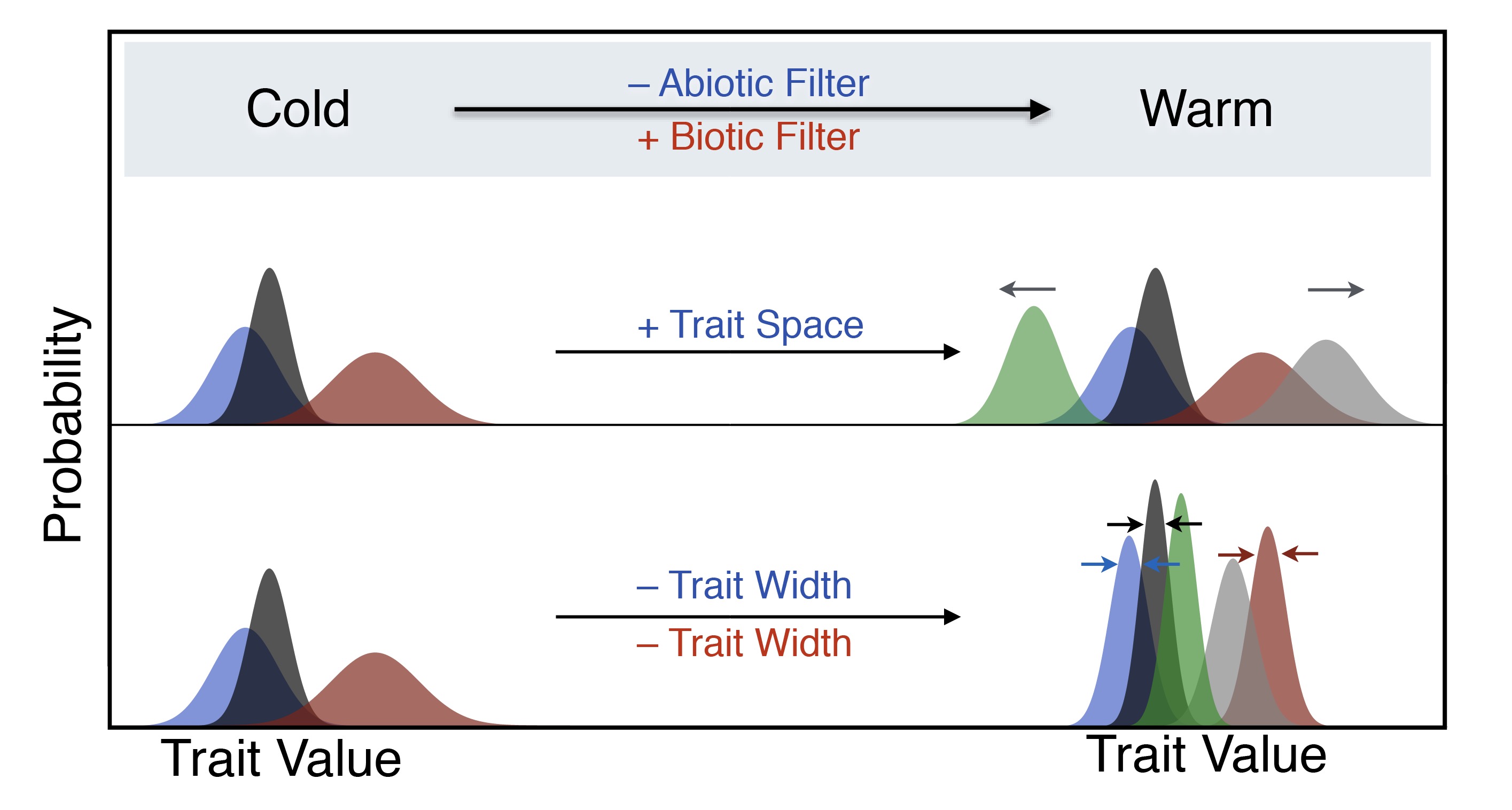

THE ISSUESpecies diversity generally increases in the tropics but testing theories that explain this phenomenon is challenging. Here we use body size to quantify niches in ecological communities and explore how species diversify towards the equator. ECOLOGICAL CONTENTCommunity ecology, latitudinal diversity gradient, niches, traits, body size STUDENT-ACTIVE APPROACHESThink-pair-share, hypothesis development, concept map, interpreting plots, informal group work STUDENT ASSESSMENTSFormulate hypotheses, minute paper, and concept map AUTHORSJohn M. Grady1,2, Quentin Read2, Sydne Record1, Phoebe Zarnetske2, Benjamin Baiser3, Kalaina Thorne1, and Jonathan Belmaker4 1Bryn Mawr College, Bryn Mawr, PA, USA 2Michigan State University, East Lansing, MI, USA 3University of Florida, Gainesville, FL, USA 4Tel Aviv University, Tel Aviv, Israel Corresponding author: John M. Grady (jgradym@gmail.com) DOWNLOADSACKNOWLEDGEMENTSWe thank Kate Thibault at NEON for helping us to compile and interpret the small mammal data. We thank S. Record's Biological Exploration course at Bryn Mawr College for their feedback as we piloted an early version of this exercise. NSF grant 1550770, 1550765, and 155075 awarded to S. Record, P. Zarnetske, and B. Baiser, respectively. CITATIONJohn M. Grady, Quentin Read, Sydne Record, Phoebe Zarnetske, Benjamin Baiser, Kalaina Thorne, and Jonathan Belmaker. 20 October 2018, posting date. Size, Niches, and the Latitudinal Diversity Gradient. Teaching Issues and Experiments in Ecology, Vol. 14: Figure Set #1 [online]. https://tiee.esa.org/vol/v14/issues/figure_sets/grady/abstract.html |

Image title
full size image |
<top> | |